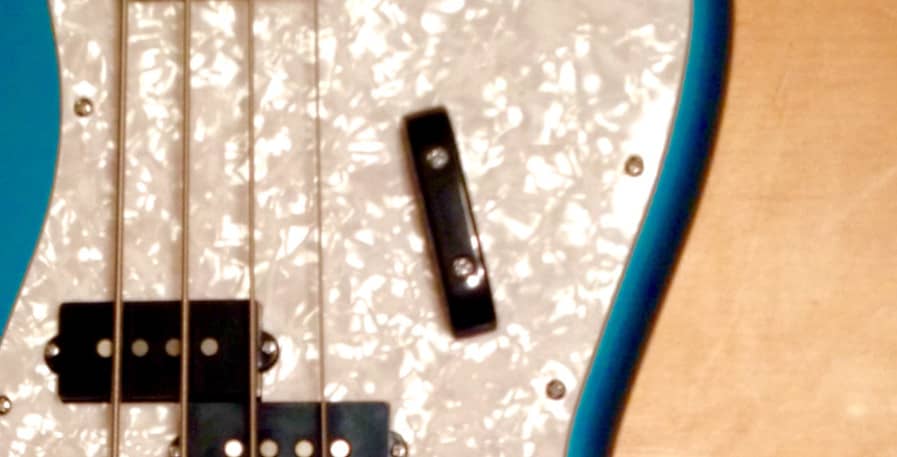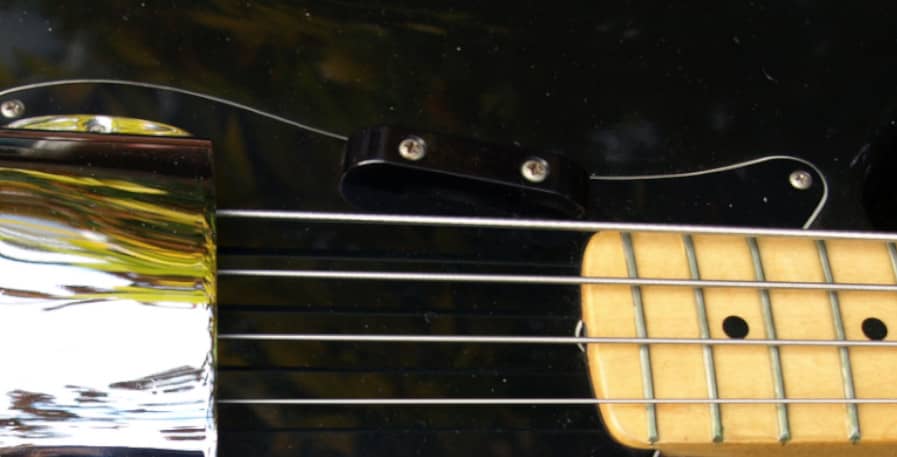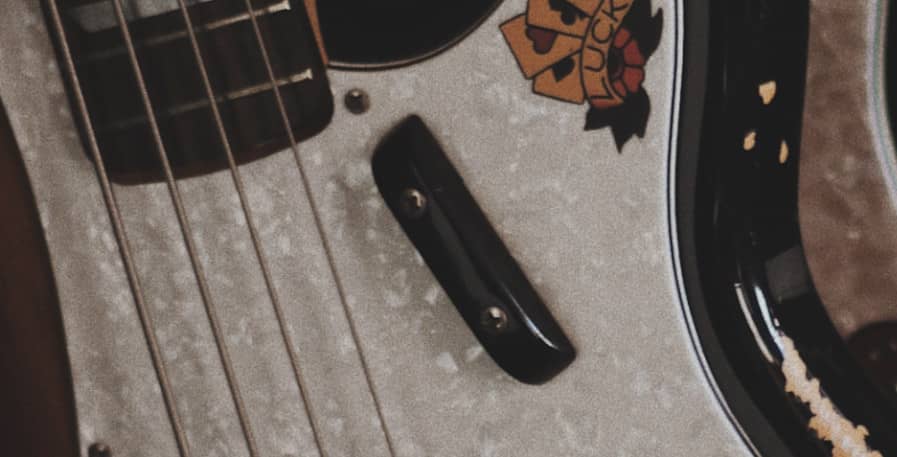This post contains affiliate links
When Leo Fender first introduced the bass guitar in the 50s it had a tug bar. Nowadays, thumb rests and tug bars are a rare sight, and manufacturers hardly ever add them to their basses.
This raises a few questions. Why were tug bars introduced in the first place, and why have they gone out of style? What`s the difference between a tug bar and a thumb rest? And most importantly, what are their pros and cons?
I have written this guide to answer these questions. Thus, after reading, you will have gained a better understanding of the bass guitar, and its history. Learning about the pros and cons of tug bars also has the unexpected advantage of developing your understanding of your own plucking technique.
The tug bar
The first Fender basses all had tug bars. This was a long, curving piece of plastic that was attached with screws below the thinnest string of the bass.

The purpose of the tug bar was to serve as a place for bassists to grab unto with their fingers. This is because back in the 50s and 60s, it was significantly more common for bassists to pluck strings with their thumbs.
I`m not talking about slapping the bass here, but rather using the thumb as a pick. This way of playing the bass would leave bassists with their fingers floating in the air. The tug bar thus served as a saddle for bass players to anchor their fingers unto.
These days, there are few bassists who like tug bars for other than aesthetic reasons. This is because plucking strings with the thumb in a non-slap way is far less common nowadays.
It`s worth mentioning, that this doesn`t mean the playstyle does not see some use. In modern times, reggae legend Robbie Shakespeare has continued to pluck strings with his thumb. This is also the case for one of the greatest punk bassists of all time: Paul Simonon.
However, these players are the exception to the rule. Furthermore, bassists who play this way, do not necessarily prefer playing with a tug bar.
Thus, in modern times, bassists who play old-school basses with tug bars generally just like how the bar looks, or have simply not cared to remove it.
The thumb rest
In 1974, Fender switched the place of the tug bar from below the G string, to above the E string. Thus, while the part remained similar, this gave it a new function.

Now, instead of being intended for gripping with your fingers, it became a place to rest your thumb. This was a reflection of bassists starting to change the way they plucked strings.
Thus, while “tug bar” and “thumb rest” are often used interchangeably, they don`t mean the exact same thing. Both words refer to a similar piece that is attached to the bass. The difference lies in where we attach it.
In contrast to the tug bar, the thumb rest is slightly more useful for modern bass players. In my opinion, it allows for a slightly more comfortable way to rest your thumb when compared to resting it on the base of the neck.
However, as I detail in my guide to thumb placement for bassists, I don`t consider resting your thumb on the neck ideal in the first place.
This is because using your thumb as a movable anchor, or playing with a floating thumb is generally preferable. I say this because I find methods to allow for better dexterity and fluidity.
Thus, while some bassists like using the post-1974 thumb rest, it serves a niche function that can limit the range of motion in your plucking hand.
As a result, most basses don`t have thumb rests. Some bassists who play a bass with a thumb rest do actively use it, but they are few and far between.
Conclusion
Tug bars and thumb rests play a notable part in the evolution of the bass. They have however become significantly less popular with time, largely due to the common ways of plucking the bass changing.
Personally, I`ve found both to be intrusive to my playing when I`ve tried basses that had them.
The tug bar for obvious reasons, as I`m not well-practiced in using my thumb as a pick. But even as a finger-style player, I didn`t like playing with a thumb rest either. This was because it felt more cumbersome to rest my thumb on it than simply using my thumb as a movable anchor.
However, if you are interested in putting one on your bass, thumb rests are available on Amazon.
One reason for getting one these days would be to explore new plucking techniques. The other is of course simply the fact that they give your bass more of a vintage look. They`re not for me, but as with everything bass related, it`s all about taste.

